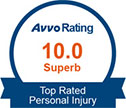Both Missouri and Kansas law requires motorists to carry motor vehicle insurance. This way motorists in those states have some degree of coverage in case they end up in accidents. Unfortunately, countless people only inspect their motor vehicle insurance terms after accidents have occurred. In reality, it is extremely helpful to appreciate the terms of your insurance. This way, you can make sure that you are covered to the greatest degree possible in case you do end up in an accident.
The following are some of the various types of car insurance and how they might be able to help you.
The Minimum Requirements for Car Insurance
Missouri law requires some basic minimum elements for motorist’s insurance covers. These minimum levels include:
- $25,000 per individual for bodily injury
- $50,000 per accident for bodily injury
- $25,000 per accident for property
Kansas also has the minimum required elements for motorists in the state. These minimum thresholds include:
- $25,000 bodily injury coverage per person
- $50,000 bodily injury coverage per accident
- $25,000 property damage liability per accident
The Role of Personal Injury Protection
While Missouri does not require Personal Injury Protection coverage, Kansas is a no-fault insurance state, which means it does. Thus, Kansas requires personal injury protection benefits, which can cover medical bills and lost wages regardless of who caused the crash.
Personal injury protection covers medical costs that a person faces after an accident. Some people can utilize personal injury protection to receive compensation for things like oral care, long-term care, lost wages, and funeral costs among other costs a person can end up facing.
Personal injury protection covers motorists, passengers in the vehicle at the time of the accident, and other household members if they are traveling as passengers in other vehicles not associated with the insurance. In some situations, personal injury protection can also provide compensation if you end up in a bike or pedestrian accident.
Just like other insurance limits, the maximum payout of personal injury protection is determined by how much insurance is available.
Even though Kansas requires personal injury protection benefits, an injured person can still pursue a claim against the at-fault driver to obtain compensation for their medical bills and wages, so long as the Kansas tort threshold has been met.
Other Types of Coverage That Can Assist You Following a Crash
If you acquire a standard insurance policy, additional coverage options exist to provide you assistance after an accident. Some of the add-on elements of insurance that people often select include:
- Guaranteed auto protection. Sometimes referred to as gap coverage, this insurance was created to cover the difference (or “gap”) between a vehicle’s market value and the amount still owed on a lease or loan.
- Rental insurance. If a negligent motorist lacks liability insurance, acquiring reimbursement for your policy can help to pay the costs of renting a vehicle while repairs are made on yours.
- Roadside assistance. If a vehicle needs to be towed following a crash, roadside assistance insurance helps to pay for the cost of utilizing towing services.
Contact An Experienced Car Accident Attorney To Know What Is Covered by Your Car Insurance
If you or a loved one was harmed in a car crash, one of the best things you can do to fight for the results you deserve is to obtain the assistance of a seasoned personal injury lawyer. Contact House Law LLC today to schedule a free case evaluation.
Tags: auto insurance, insurance, personal injury
Related Posts: New Vehicle Technology Can Serve as a Distraction When the Other Motorist Lies to the Insurance Company The Limits of Insurance Coverage




